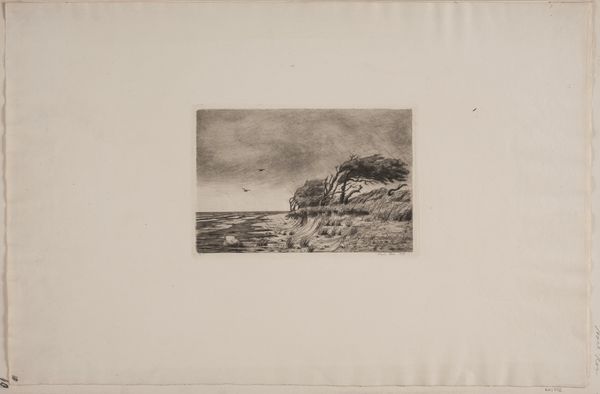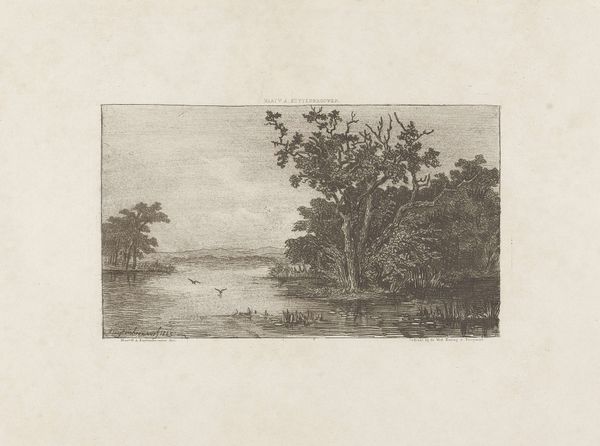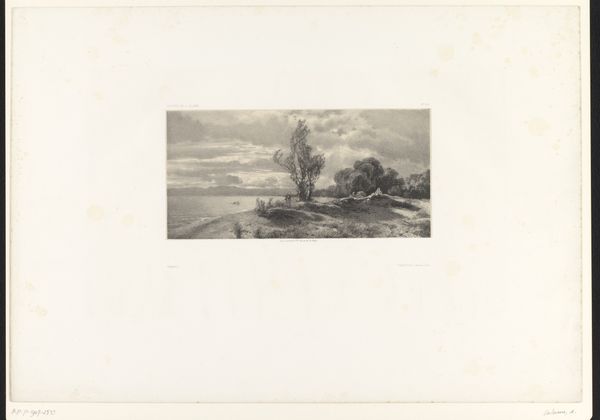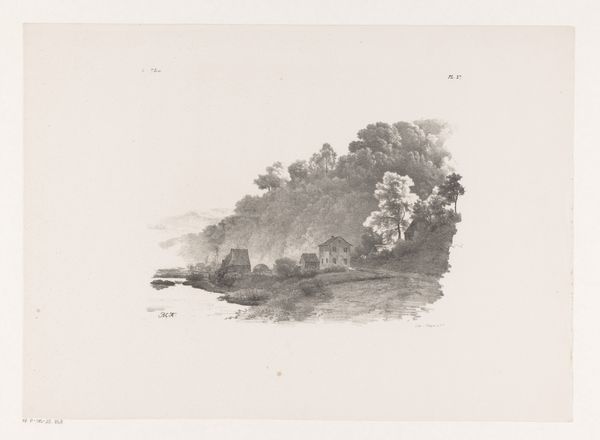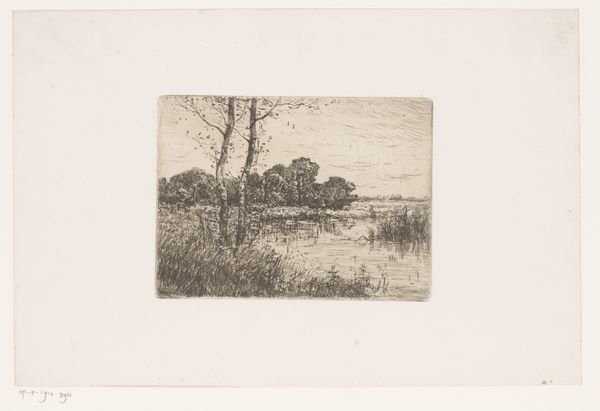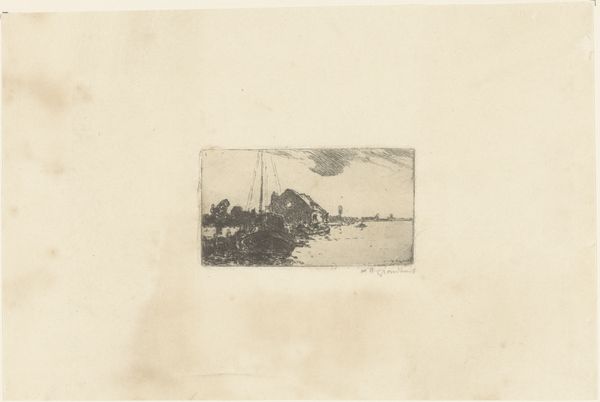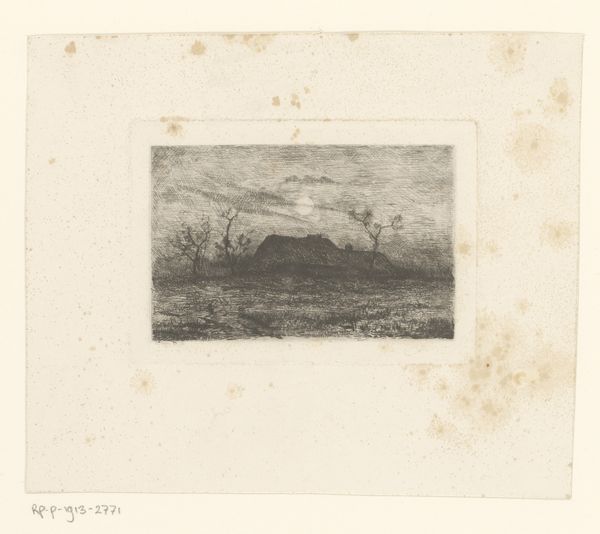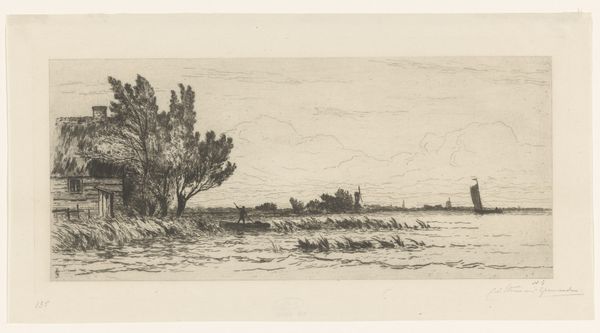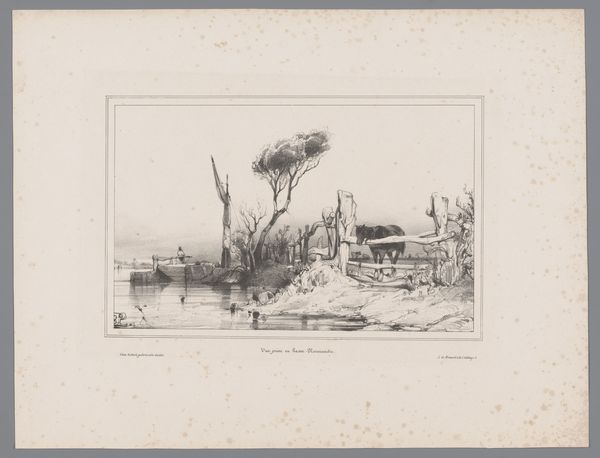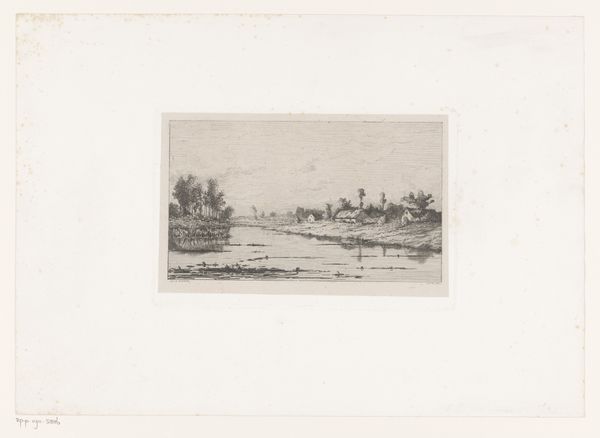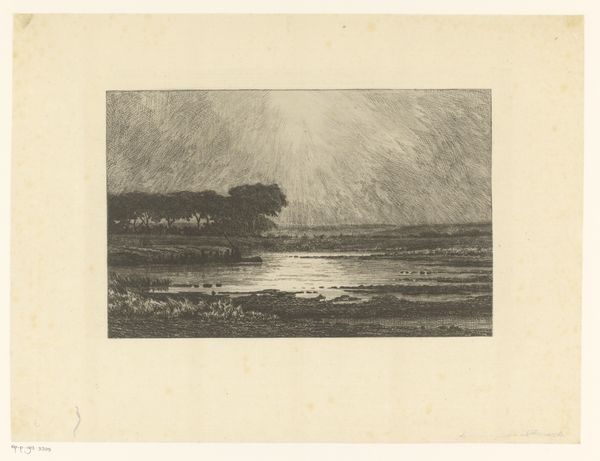
drawing, pencil
#
pencil drawn
#
drawing
#
light pencil work
#
pencil sketch
#
landscape
#
figuration
#
romanticism
#
pencil
#
pencil work
#
realism
Dimensions: height 100 mm, width 140 mm
Copyright: Rijks Museum: Open Domain
Curator: Oh, a pencil sketch – immediately evokes a quiet, reflective mood. The subdued tones are quite arresting. Editor: This is Johannes Franciscus Hoppenbrouwers' "Landschap met herten aan het water," created around 1845. The work's currently held here at the Rijksmuseum. It’s fascinating to consider it in the context of increasing industrialization and urbanization happening at that time. Curator: Yes, the almost photographic realism combined with that delicate touch…it speaks volumes. There’s a profound longing for the serene simplicity of nature that really comes through, doesn't it? I feel almost pulled in. Editor: Absolutely. The artist, through his realistic rendering of this landscape with deer drinking in the water, consciously invokes Romanticism—a sort of pastoral fantasy. These idealized natural scenes are, often, a subtle critique of modernization's discontents. Curator: A gentle rebellion in grayscale, perhaps? There's a fragility to the work that is compelling – all these very fine lines, yet a very defined scene. Does it feel to you as though he captures something fleeting? An elusive moment, almost a memory? Editor: The medium lends itself perfectly to that feeling, doesn't it? Pencil has a way of recording subtleties. This drawing offers commentary on the way emerging national identities in Europe increasingly relied on constructing an idealised rural past to shore up ideas of 'authentic' cultural heritage. Curator: And to do this using only pencil – it's astonishing, the level of nuance Hoppenbrouwers achieves with it. Those layered grays… like soft veils draped over everything. What’s remarkable is how he turns something so mundane into a kind of reverie. Editor: He's definitely using realism as a form of both appreciation for the ordinary, but also as this tool of idealization to fuel nationalistic ideologies that grew out of folk culture. These kinds of landscapes were incredibly powerful tools. Curator: It feels radical somehow that Hoppenbrouwers simply observed with such clarity. What we see is not just a landscape, but, arguably, a state of being. Editor: Precisely. And by situating those deer as inhabitants, and symbols, in the pastoral calm, he gives voice to the narratives we tell ourselves about who we are. It's powerful, isn't it? Curator: Absolutely, even in its quiet way.
Comments
No comments
Be the first to comment and join the conversation on the ultimate creative platform.
